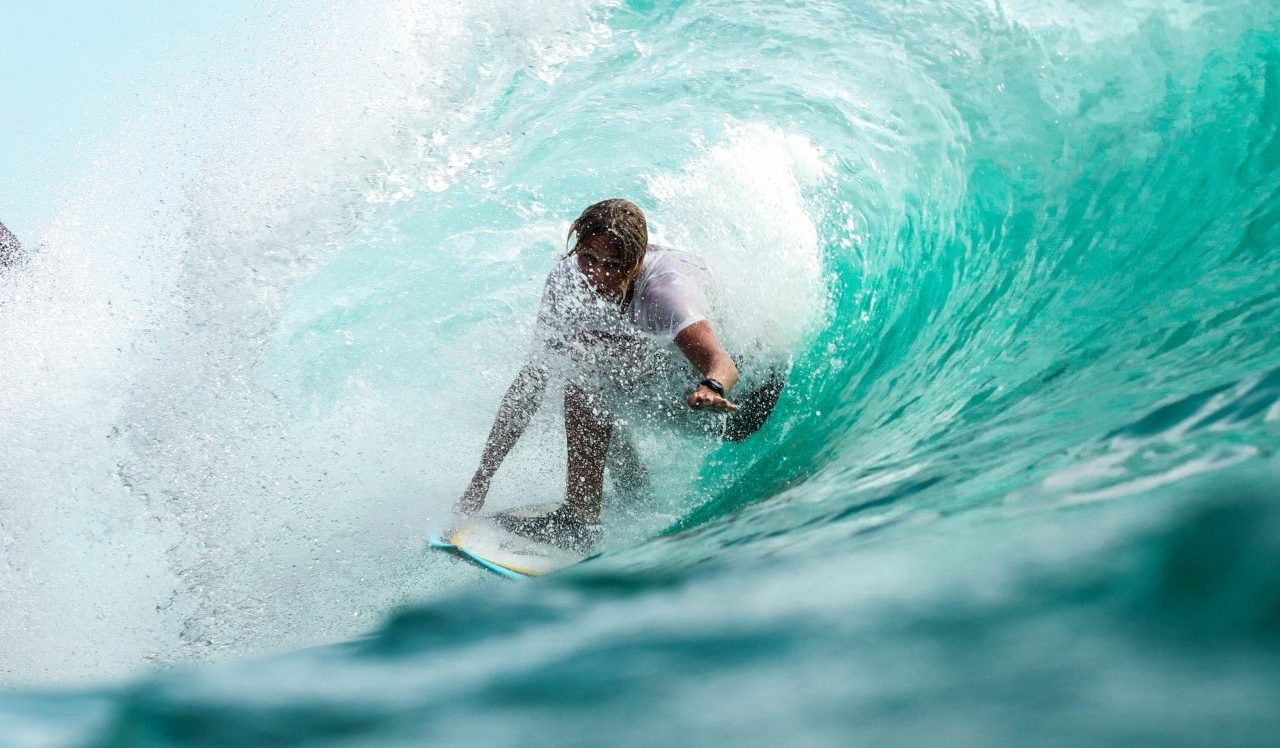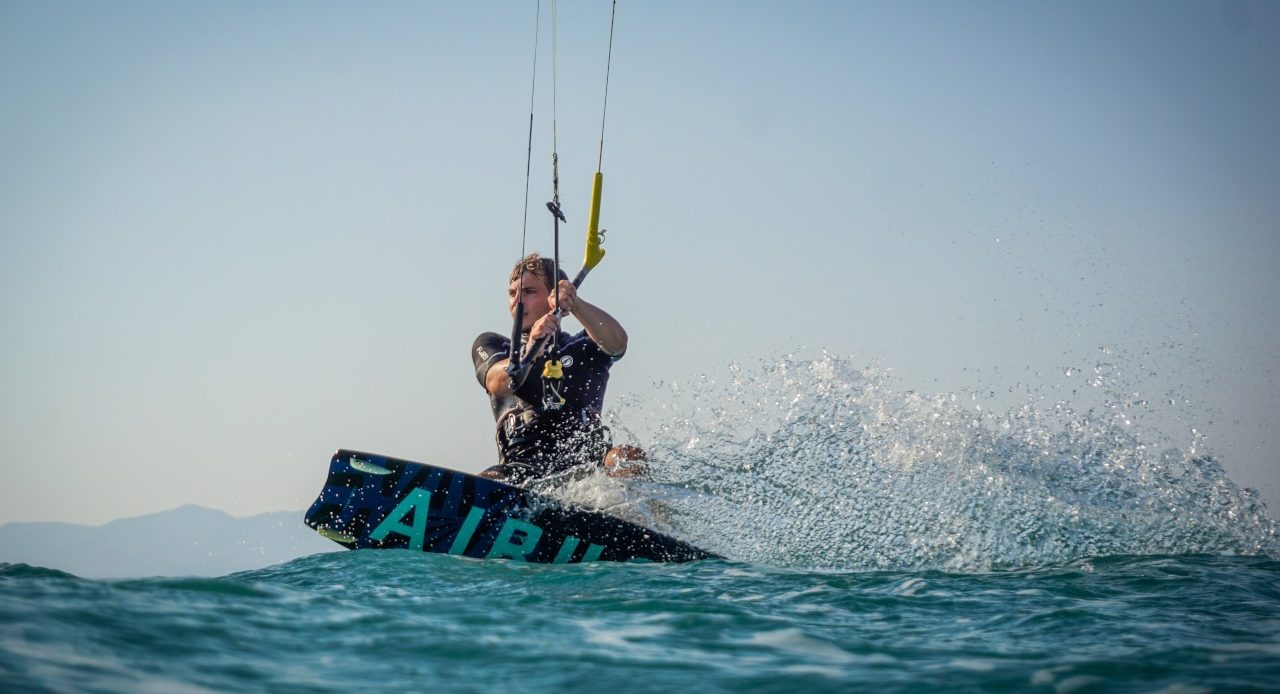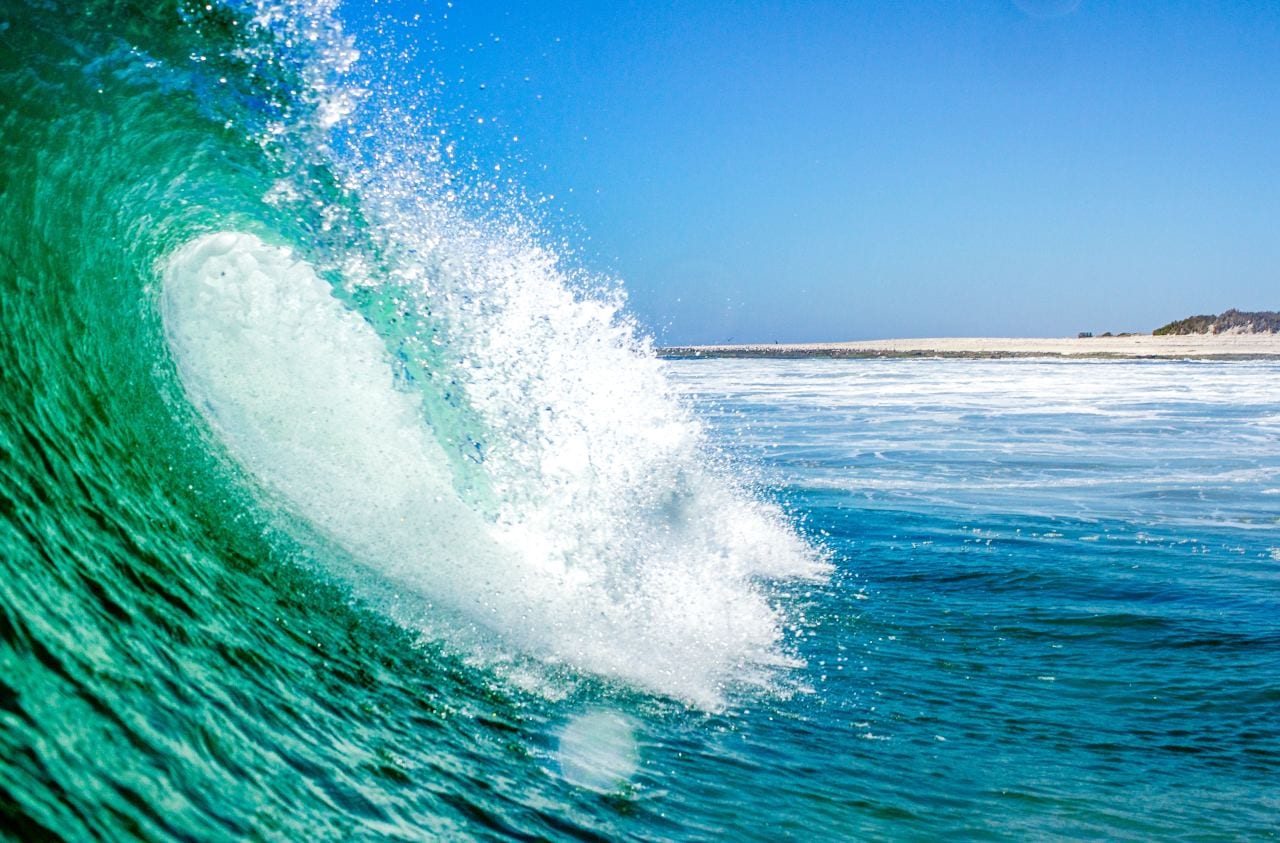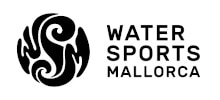Knowing the sea conditions and tide times is extra work when practising your passion for water sports. This is why we’ll explain to you how to use the wave forecast reports and what aspects you should pay attention to before organising a surfing session.
‘L’EMBAT’ STARTS BLOWING IN BAHÍA DE ALCUDIA: THE SEA IS OURS!
May is the ideal month to enjoy the unique ‘embat’ wind, which is why Alcudia Bay is an unmissable place for surfers. With ‘l’embat’ the sea is stirred up and the waves appear in the landscape. Although not always with the same intensity (or knots) at any time or every day it makes an appearance. That’s why it’s a good idea to check the surf forecast and find out when it’s the best time to go surfing. Or to go kitesurfing, kite foiling, windsurfing foiling or sailing,…
In fact, the days of ‘embat’ start in April and last until October. This is why Water Sport Mallorca school teaches its water sports classes only during these months of the year. Just as every water sport has its own special time of day.
Thus, the absence of waves – unless there is a swell – makes it possible to learn sailing or windsurfing for children and adult beginners in the morning. On the other hand, from midday onwards, it is the ideal time for kitesurfing, kite foiling and foil windsurfing, due to the constant 12 knots that blow every day. And so on and so forth.
That’s why every surfing and other water sports lover has to learn certain notions of meteorology. They will help you to know when it is the best time to go to a specific spot, since we already know that the tides allow or denies the practice of many water sports. In this case, wave forecasts are tools that make life much easier for surfers.
Today we teach you how to interpret the wave forecast reports in a basic way, so that you can become familiar with them.
WAVE FORECASTS
It is therefore clear that any water sports practice is subject to the current weather. However, there are several fundamental details that must be taken into account when interpreting a sea report. These are essentially the swell and wind forecasts. But there are also other elements to consider, such as the location or the spot’s marine relief.
If you are not familiar with the spot where you want to surf, it is advisable to get advice beforehand about its specific conditions. This way, we will know the best time of the day to have a good surfing session, as well as the size of the waves and the type of tide that are most suitable for surfing in that enclave.
To check the type of swell that exists in each part of the world, there are tide tables. These include space and time coordinates to provide information on sea conditions. In other words, it provides information on the state of the sea in a specific place at a specific time. However, tide times change from one day to the next; therefore, we should consult the tide table daily before going out surfing.
Also, remember that the tidal phenomenon depends on astral conditions, such as the gravity of the moon and the sun. Thus, their influence on the masses of water gives rise to the appearance of ebbs and flows.
In other words, whenever the sun and the moon are aligned, the production of high and low tides increases. On the other hand, when the two stars are at right angles to each other, the tides are uniform and small.
However, nowadays we can easily use wave prediction forecasts. There are many technological resources on the Internet that offer these forecasting sites.
INFORMATION PROVIDED BY THE WAVE FORECAST REPORTS
Once we know the basic characteristics of the chosen spot, we go on to consult the wave forecast report. For this purpose, there are numerous surf guides that provide this information, such as Windguru, Surfforecast or magicseaweed.
The wave forecasts offer valuable information about:
- Wave size
- Period
- Wind direction
- Swell direcion
- Tide times
To guarantee a good swim you need to know the type of tide at the spot, the swell, and where the wind is blowing from. All of this is provided by the wave forecast. We will now go on to discuss what each variable is about.

SIZE OF THE WAVES
Taking into account the height of the swell is essential to be able to enjoy a good day. However, wave reports tend to report the size of the waves at sea, which is not exactly the same height as the waves near the shore. It depends on whether there are breakers or not.
This is where it is necessary to have prior knowledge of the beach where we are going to surf. Depending on the orientation, the waves will be the same size or bigger than the swell if the seabed helps; or smaller if the beach is covered.
On the other hand, the direction of the swell also influences the height of the waves that reach the coast. Thus, the more frontal the wave direction, the more reliable the size predicted by wave forecasts . The differences appear when the direction of the waves and the orientation of the beach are opposite. In this case, the waves are likely to be smaller than the predicted wave size.rtado por las predicciones de olas [/su_highlight]. Las diferencias aparecen cuando la dirección del oleaje y la orientación de la playa son opuestas. En este caso seguramente las olas serán de un tamaño menor que las previstas.
Whatever the type of wave, remember that for each type of wave, there is an ideal surfboard model.
WAVE PERIOD
Also called swell period, this is the time that separates the entry of one wave from another. This variable is also related to the strength of the swell.
If the low period is less than 10 seconds it means that the wind is blowing onshore or sea breeze. This means that the waves will be riding each other and will be weak, slow and dirty.
On the other hand, if the high period is more than 12 seconds, then the sea offers good surfing conditions. The swell is favoured by offshore winds, powerful, individual, orderly and clean waves.
A period of more than 15 seconds generally implies the entry of a series of large waves.
THE WIND DIRECTION
Checking the wind forecast is essential. There are different types of winds that influence the quality of the swell, depending on their direction and intensity. Although it is often said that it is better to have a glassy, almost windless day for surfing, this is not always the case. Certain winds are helpful for a successful surfing session.
Although we are not going to dwell too much on this point, it is worth knowing their potential.
Offshore winds, come from the coast and blowing out to sea,. They are very favourable to the quality of the waves: they produce high waves with steep walls. This is because they promote the creation of new, orderly waves, delay their breaking and finally break them harmoniously. They are therefore ideal for surfing.
Onshore winds, on the other hand, are those that blow from the sea towards the land. They are the sea breezes that hit us in the face when we go out to sea. They cause a choppy effect, a choppy sea with overlapping waves. Their presence prevents good surfing.
Cross-shore winds are at an intermediate point between the two previous ones. These are lateral winds which, although they tend to be onshore, do not allow quality waves to be surfed.
Offshore winds arise at dawn and dusk; if the wind intensity is less than force 4, it is not a problem for surfing. Onshore winds, on the other hand, are typical of sunset, and as soon as they reach an intensity of level 2, they become uncomfortable.

SWELL DIRECTION
On the other hand, it is a good idea to use Google Maps to find out the swell direction of the beach, as the direction of the wind has a great influence on the quality of our session. Therefore, the better we know the orientation of the spot, the better we know how a particular wind influences it.
It is therefore most advisable for the orientation of the spot to be accompanied by offshore wind, as we have already mentioned.
TIDE TIMETABLES
The quality of the tides is the most predictable factor, thanks to the efficiency of tide tables. The occurrence of high or low tides depends to a large extent on the lunar gravity and their presence is greater in the oceans.
Thus, when there is a full or new moon, neap tides are exacerbated. In other words, the height of the tide oscillates more intensely and the sea is rougher.
On the other hand, in the quarter moon there tends to be dead tides, as the sea is more serene and uniform.
There are beaches that can function with both low and high tides, but generally they function with only one type of tide. It is worth finding out this information. Furthermore, depending on the sea relief of a beach, it will be better to surf at high tides or low tides. It is therefore necessary to know the time – or period – of low or high tides on the beach.
Likewise, not all oceans or seas show the same activity in the movement of their waters. It depends to a large extent on the geographical area. For example, our Mediterranean Sea hardly experiences any spring tides. Whereas the Atlantic Ocean or the Cantabrian Sea do experience swells.
Thus, we see that in order to surf in some enclaves of the Peninsula it is necessary to know the tide schedule.
HOW FAR IN ADVANCE SHOULD YOU CHECK THE WAVE FORECASTS?
The reliability of wave forecasts depends on the geographical location of each spot. As mentioned above, some seas are so fickle and fluctuating that predictions change frequently. In these cases they have to be revised every 24 hours.
However, in other areas of the planet, it is possible to produce a fairly accurate wave forecast up to two weeks in advance. This is the case for large swells.
In short, weather forecasts and wave forecasts are of great help to surfers. Thanks to their reliability, we can be in the right place at the right time to get a great swim. But they also allow us to understand how marine nature works and to use it to our advantage.
However, the information in the wave forecast reports should be complemented by the recommendations provided by local surfers; or, if you already know your spot well, combine that knowledge with the forecasts. Because no matter how good the wave forecasts and other guides are, they are not infallible!
In this way, we will know when the sea conditions are the best to go surfing and achieve a triumph.
And in our case, due to the location of our school, the most favourable weather is during the spring and, above all, the summer season. Courtesy of the marvellous and constant wind that is ‘L’embat’.
REFERENCES CONSULTED
- Fernández Alegre, Á. (2018). Estudio de los condicionantes para la formación de una ola óptima para la práctica de surf (Bachelor’s thesis, Universitat Politècnica de Catalunya). Recuperado de https://bit.ly/3tjwqr0
- Qué mala vida (2017). Cómo interpretar los partes de olas. Recuperado de https://bit.ly/2RtbGj2
- Surf-forecast.com (s/f). Previsiones de olas y resportes de surf mundiales. Recuperado de https://bit.ly/3b1GjmU





